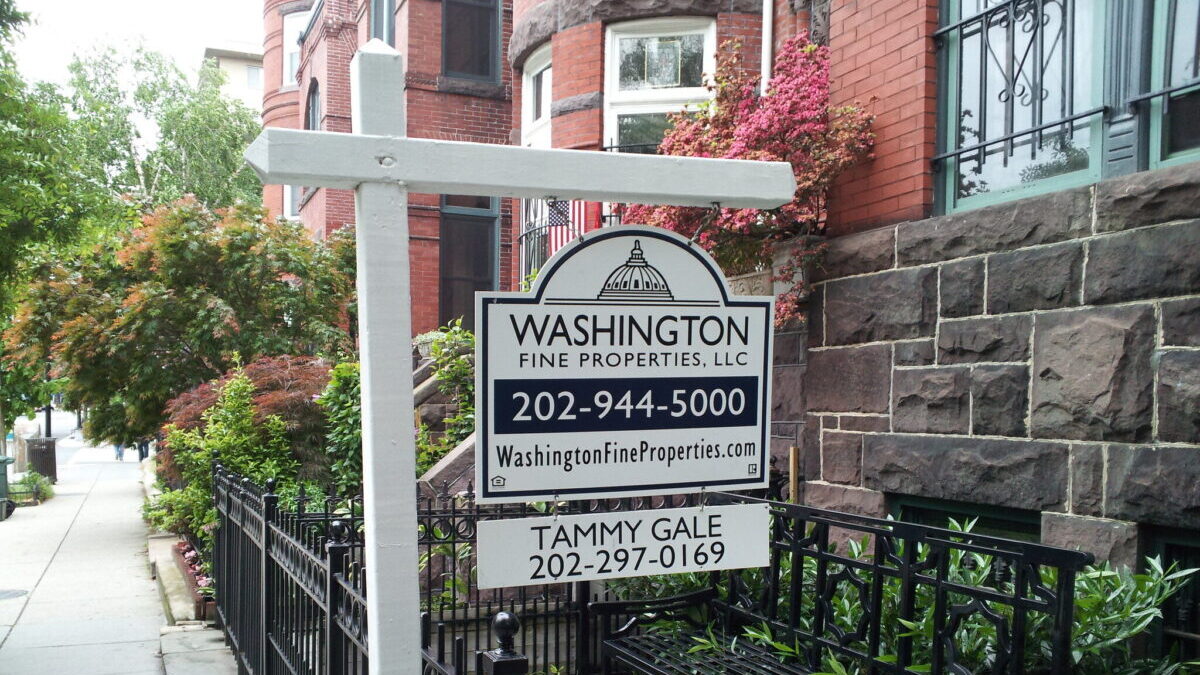To this conservative, a recent New York Times column that encouraged the Federal Reserve to take actions focused on bringing down mortgage rates brought to mind the old Yogi Berra quip about “déjà vu all over again.” Have federal officials intervene to make mortgages more affordable and accessible? What on Earth could go wrong???
Sarcasm aside, the article accurately diagnoses the problems facing the housing market, and ultimately the economy, as a result of current interest rate policies. But particularly given events of the last several years, count this conservative highly skeptical that the “solution” to a problem caused in part by poor Federal Reserve policy can come via yet another policy intervention by Fed officials.
‘Frozen’ Markets
The opinion column, by investment banker Daniel Alpert, observes what I wrote about a few short weeks ago: Namely, the spike in mortgage rates — caused by the Federal Reserve rapidly raising its interest rate benchmark since early 2022 to fight inflation — has effectively frozen the housing market. Households that locked in mortgage rates at or below 3 percent during the pandemic will not want to move if doing so means they would have to pay current mortgage rates approaching 8 percent.
Many signs point to stasis: The supply of houses on the market remains low, as people do not want to sell. Because mortgage rates have spiked while prices have maintained their pandemic-level highs, would-be buyers feel an affordability squeeze; many have stopped looking.
Alpert also observes another important knock-on effect: With few people able to purchase homes — because of the low inventory on the market, and because of the combination of high mortgage rates and high prices — rents will likely increase. And with rents comprising one element of monthly inflation, a policy change (i.e., raising interest rates) designed to lower inflation could help to raise it, at least when it comes to rent and housing costs.
Mortgage Market Meddling
Though aptly diagnosing the problem, Alpert misfires on the solution. He proposes that the Federal Reserve “should immediately reverse course and buy mortgage securities to help moderate consumer mortgage rates. It can keep selling Treasury bonds if it so chooses. This will allow the Fed to raise non-housing interest rates” to help slow inflation “while also allowing the housing market to resume functioning normally again.”
The idea holds superficial appeal but could prove difficult to execute. Alpert himself admits that his proposal asks the Fed to “tap the gas” — that is, increase demand in the housing market by artificially lowering mortgage rates — “while it [is] pumping the brakes,” slowing the non-housing portion of the economy by keeping interest rates high.
Federal Reserve Chairman Jerome Powell has spent time at press conferences over the past year-plus talking about the factors Fed officials consider when developing interest rate policy. Comparing monetary policy to a car trip, Powell noted the Fed must weigh the destination (i.e., the inflation measure), the speed (i.e., in what increments to raise interest rates), and the acceleration (i.e., whether and when to slow down and stop raising rates).
Adding yet another variable to the equation by separating mortgage rates from other types of interest rates — forcing the Fed to analyze how much “gas” versus how much “brake,” to continue with the driving analogies — will only increase the complexity.
Recall too that the Fed doesn’t exactly have a sterling track record of late when it comes to interest rate policy. Powell and others have admitted that the Federal Reserve should have started raising interest rates sooner, perhaps in mid-2021, to head off incipient signs of rising inflation.
Had the Federal Reserve acted earlier, prices might not have skyrocketed as much as they have over the past few years — and the Fed would not have needed to raise interest rates so high and so fast to get inflation under control. Given that poor decision-making by the Federal Reserve helped cause the mess the housing market is currently in, what on Earth makes Alpert think that asking the Fed to meddle more will end in anything other than tears?
Don’t Just Do Something — Stand There!
In many ways, the best argument against Alpert’s proposal comes from Alpert himself:
Just as creative fiscal policies were employed in the form of direct stimulus and supplements to address the pandemic’s economic slump, innovative solutions must be applied to address the boom and inflation that followed.
Therein lies the problem. The past quarter-century has seen all manner of, as Alpert put it, “creative policies” on the fiscal and monetary fronts. Those policies — ultra-low interest rates, quantitative easing, and massive fiscal stimulus — have in rapid succession brought us a housing crash, a financial crisis, years of economic stagnation, bubbles in nearly every asset class, tens of trillions of dollars in federal debt, and most recently the highest inflation in generations.
If all of those events one after another isn’t enough of a signal for the supposed masters of monetary alchemy to quit while they’re ahead, I don’t know what is. If Ronald Reagan had witnessed the past two decades of economic policy, he might accurately have stated that the 10 (not nine) most terrifying words in the English language are “I’m from the Federal Reserve, and I’m here to help.”
It may sound impolitic to say, but Americans of all shapes and sizes have over the past 20 years become addicted to easy money and cheap debt. Weaning ourselves off ultra-low interest rates will not be easy or happen overnight, although a lawsuit that could reduce real estate commissions may make houses more affordable at the margins.
But the sooner we get on with the job, the better off we as a nation and an economy will be. To do otherwise, as Alpert suggests, would ultimately just prolong the agony — and increase the risk of another catastrophe.









